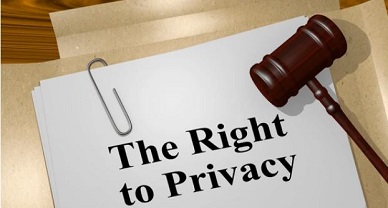Trademark Infringement Get So “Lucky”
This popular case originated from a long-running legal dispute involving the Petitioner, Lucky Brand Dungarees, Inc. (Lucky Brand), and the Respondent, Marcel Fashions Group, Inc. (Marcel). Lucky Brand claimed a defense against Marcel in the most recent case between the two, which it had not fully explored in a previous suit between them.
Both organizations dealt in apparel and employed the term “Lucky” as part of their garment insignia. The Respondent secured federal trademark registration for “Get Lucky” in 1986, and the Petitioner commenced offering garments employing the registered trademark “Lucky Brand” and term “Lucky” a few years later, in 1990. This case saw the issuance of several marks. These trademarks sparked a nearly twenty years legal battle between the two corporations, which went through three rounds.
Marcel sued Lucky Brand in 2001
Marcel sued Lucky Brand in 2001, arguing that the Petitioner’suse of “Get Lucky” in commercials infringed on the Respondent’s trademark. The parties struck a settlement agreement in 2003 where the Lucky Brand consented to discontinue the tagline “Get Lucky”. The Respondent consented to waive all lawsuits relating to the Petitioner’s use of its own trademarks in return.
In 2005, Marcel and its licensee misappropriated Lucky Brand’s trademarks by replicating its designs and emblems in a new apparel line, according to the lawsuit filed by the Petitioner. It was held that the Petitioner violated the settlement agreement and was permanently barred from duplicating or replicating Marcel’s “Get Lucky” mark but the Petitioner’s use of the term “Lucky” was not barred or even mentioned in the injunction. During the trial, Marcel’s surviving counterclaims, those alleging infringement from Lucky Brand’s ongoing use of the “Get Lucky” tagline beside its existing marks were dismissed by the jury.
Marcel initiated a lawsuit against Lucky Brand in 2011, alleging that Lucky Brand had continued to infringe on Marcel’s “Get Lucky” mark and thus violated the previous suit’s judgment. It was contended that the word “Lucky” used by Lucky Brand infringed their phrase- “Get Lucky”. Lucky Brand was granted summary judgment by the District Court, noting that Marcel’s claims in the 2011 Case were virtually equivalent to its counterclaims in the previous suit. However, the Second Circuit Court of Appeals disagreed. Marcel’s effort to charge Lucky Brand in contempt for breaching the injunction obtained in the 2005 Suit was also denied by the Second Circuit. Lucky Brand claimed that by negotiating the settlement agreement, Marcel had relinquished its claims, which the court annulled and remanded for future proceedings. Lucky Brand’s request to dismiss was granted on remand by the District Court. The Second Circuit reversed and remanded, ruling that a theory is known as “defense preclusion” barred Lucky Brand from raising the release defense in the present suit. As a result, the panel reversed the District Court’s decision and granted certiorari to settle a split among the Circuits over when, if ever, claim preclusion pertains to defenses brought in a subsequent complaint.
The question in the case was whether so-called “defense preclusion” is a proper application of res judicata, which at the time was a phrase that included two independent doctrines addressing the preclusive impact of earlier litigation. Claim preclusion was the second doctrine (sometimes called res judicata). “Defence preclusion” had never been formally acknowledged by the Supreme Court as a separate category of res judicata. Instead, the case law showed that any such defense preclusion must meet the constraints of issue preclusion or claim preclusion at a minimum. Where issue preclusion is not applicable, the parties stipulate that a defense can be prohibited only if the “causes of suit” in the two cases are the same (when a common nucleus of operative facts is shared).
The two lawsuits, in this case, were based on distinct behavior, involving different marks, and taking place on different dates. As a result, they lacked a “common nucleus of operative facts. “The difference was understood where firstly it was stated that “Get Lucky” was infringed and later it came upon to trademark infringement of only the word “Lucky”. The two suits were not based on the same cause of suit. Hence, the claim preclusion didn’t and couldn’t prevent the Petitioner from defending the 2011 Suit using its settlement agreement defense. Marcel argued against this result, using treatises and Supreme Court precedents to establish a form of “defense preclusion” doctrine that applies to the circumstances of the current case. Mentioned rulings, however, were not relevant in the prevailing situation. Lucky Brand’s defense in the 2011 Suit did not jeopardize the 2005 Suit’s verdict. Hence, the defense in the second litigation would have jeopardized the legitimacy of the first court’s verdict by disputing the legality of all bonds of the same issue. The same could not be stated for the defense offered in the 2011 Suit in relation to the 2005 Suit’s verdict.
Finally, Marcel’s 2011 Suit asserted distinct claims and attacked different behavior than the 2005 Suit. Marcel couldn’t stop Lucky Brand from putting up additional defenses under those conditions. The Second Circuit’s decision was thus overturned, and the matter was remanded for further proceedings consistent with this ruling.
Author: Saransh Chaturvedi an associate at IP And Legal Filings, in case of any queries please contact/write back us at support@ipandlegalfilings.com.




